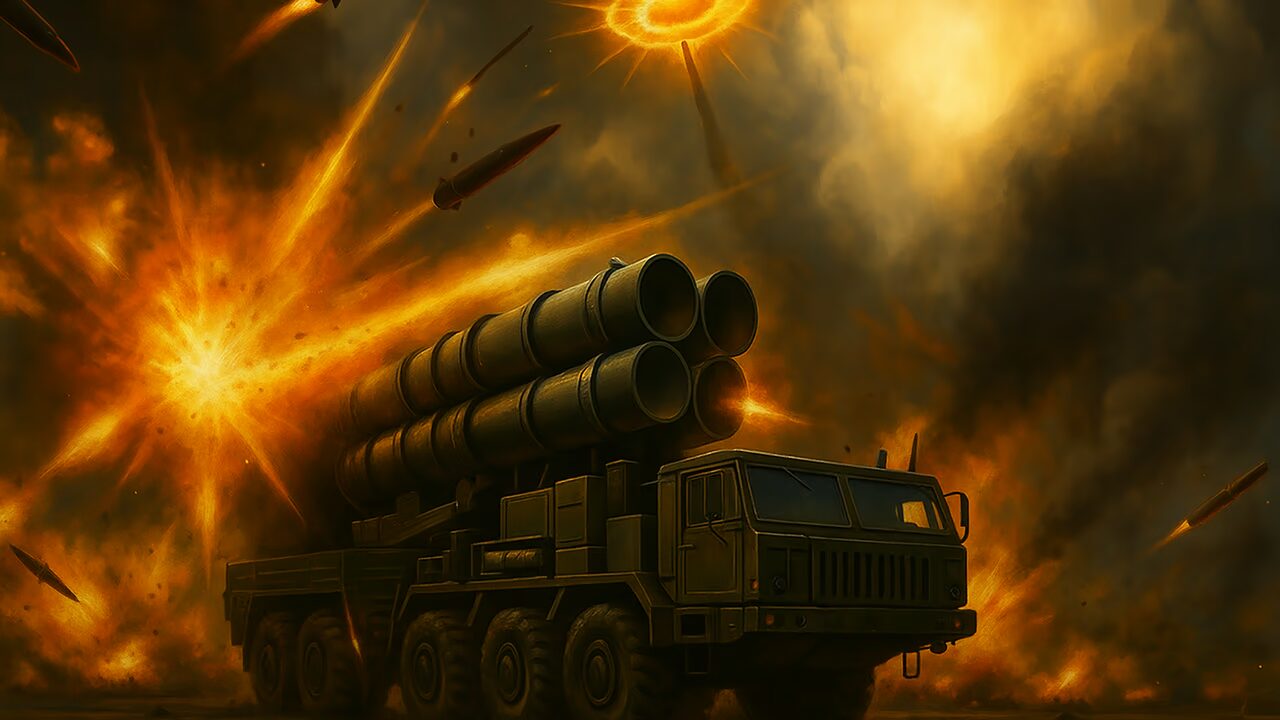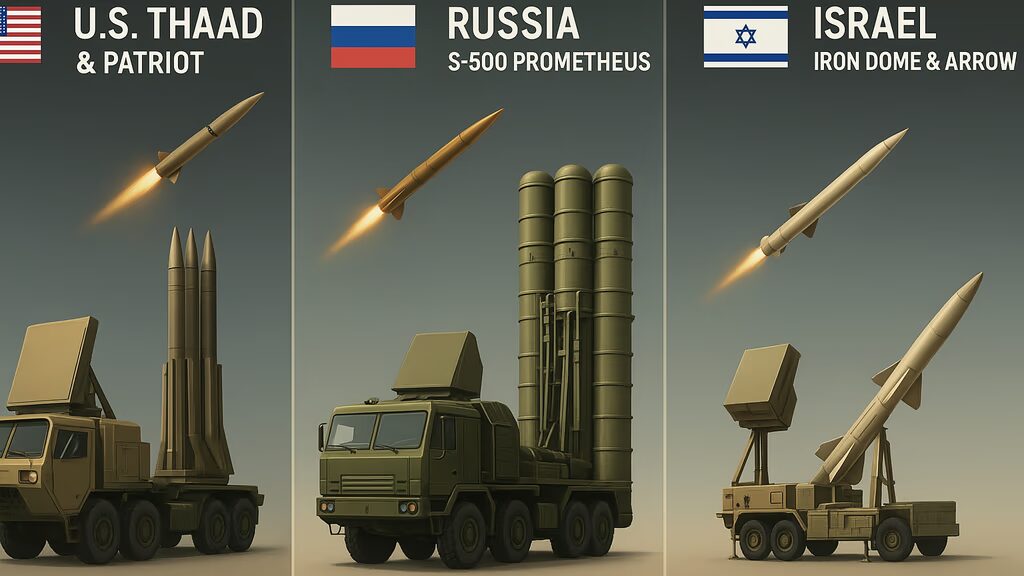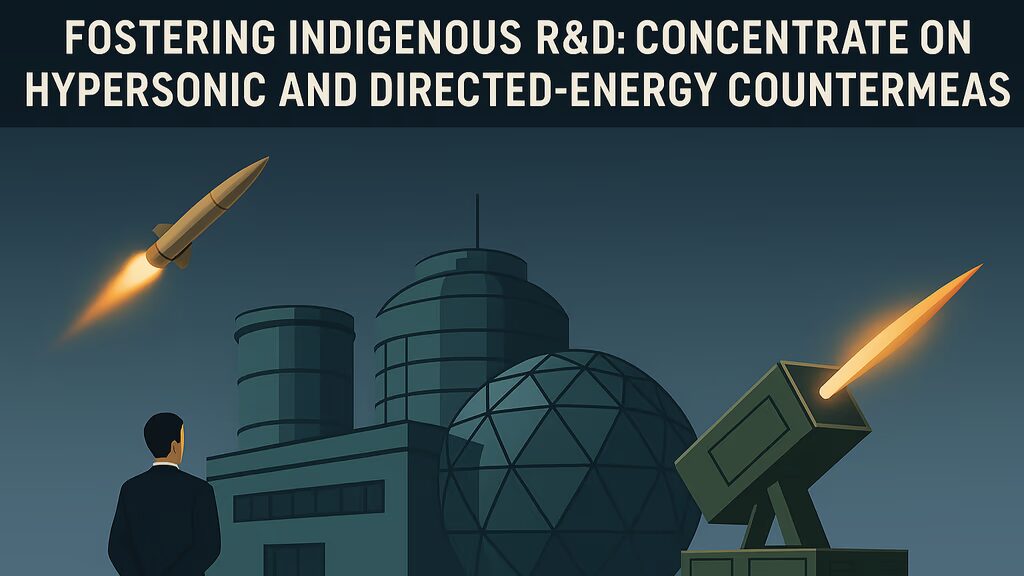
India’s security landscape is formed in a complex geopolitical environment; two frontline adversaries and cross-border threats make it a strategic necessity for strengthening air defence. Sudarshan Chakra’s roots: this has been India’s sincere effort to create a multi-layered defence shield that would roll up an indigenous umbrella capable of robust and all-around aerial protection. This system derives its name from the fabled weapon of Lord Vishnu and incorporates provisions to withstand threats from enemy fighter aircraft, drones, and long-range ballistic missiles.
ALSO READ- Indian Navy Set to Commission Frontline Stealth Frigates Udaygiri and Himgiri
Sudarshan Chakra Meaning-
It is beyond a traditional defence shield and addresses some of the real security challenges of India.
Threats of a Two-Front War:
- Constant military friction with Pakistan, plus the rapidly deteriorating standoff with China, requires advanced protection.
- Both foes have been ramping up modernisation of their missile and drone capabilities, thus greatly raising the stakes for India’s defence preparedness.
- A strong shield assures that India can handle two-front wars without overstretching its air power.
Growing Aerial Trespassing:
- Increasingly, hostile actors are utilising UAVs, drones and missile technology.
- The cross-border drone drops of weapons and narcotics highlight the growing asymmetric threat.
- Advanced counter-drone and missile defence measures are critical to neutralising low-cost but high-risk incursions.
Strategic Autonomy:
- An indigenous shield reduces dependency on imports.
- In this way, it is fully consonant with India’s Atmanirbhar Bharat vision by enhancing domestic defence manufacturing capacity.
- Self-reliance means that during emergencies, India cannot be held hostage to any interruptions of supply chains or sanctions.
Technology Integration:
- AI, radar networking, and satellite command systems provide a futuristic edge.
- Smart automation minimises human error and quickens the tempo of threat interception.
- Integration with space assets extends long-range surveillance and early warning capabilities.
Key Components of the Sudarshan Chakra Shield-
The Sudarshan Chakra is designed in a multi-layered architecture for intercepting all threats at varying altitudes and ranges.
Outer Layer:
- Held for significantly longer reach interceptors of the BMD system.
- Capable of intercepting missiles from distances of over 1,500 km away.
- Protects major metros and strategic assets.
Middle Layer (Medium-range systems):
- Threat Areas extend to 100-300 km.
- Engaged in target practice with enemy fighter planes, stealth cruise missiles, and UAVs.
- Works with indigenous Akash-NG systems and Russian-origin S-400 batteries.
Inner Layer (Short-Range Systems):
- “Last mile” protection.
- Neutralisation of Drones, Helicopters, and Low-Flying Missiles.
- Includes Akash SAMs, QRSAMs, and is currently developing laser-based systems.
Radar and Surveillance Network:
Phased array radars of advanced technology for an all-around 360 surveillance. Integrated with satellite data for real-time monitoring. AI-enabled, stealth aircraft detection, and hypersonic threats.
Command and Control:
Operates through a centralised command centre linking all three defence layers. Automated decision-making speeds up the response time. This Network Centric Warfare (NCW) method will allow joint operability across the broad spectrum of activities of the Army, Navy, and Air Force.
Strategic Significance for India-
Key Assets: Safeguarded:
- Nuclear command and control bastions.
- Military installations and forward-operating bases.
Deterrence Factor:
- Projects India’s posture in defending itself against sophisticated attacks from missiles.
- Ensures credibility in a nuclear environment and deters an enemy first strike.
Boost to Indigenous Defence Industry:
- Limiting dependence upon Russian S-400s/useless Israeli systems.
- Encourages domestic R&D under Atmanirbhar Bharat.
- Opened doors for export to friendly nations.
Challenges in Implementation-
Sudarshan Chakra shield has great promise, but challenges do remain:
High Expenditure:
- Creating multi-layered defence arrangements for a country as huge as India is extremely resource-intensive.
- Balancing the budget between modernisation and manpower-enhancing activities of other services of the military.
- The shield’s long-term sustainability must look toward public-private partnerships in defence production.
Technology Gaps:
- A new challenge unfolds in the arena of hypersonic glide vehicles and stealth drones. India must invest heavily in R&D to stay in sync with the fast-evolving technologies of adversaries, namely China.
- Global technology restrictions often shut the doors to accessing critical components in defence.
Integration Problems:
- To align indigenous systems with imported technology, such as the S-400, is tough.
- Real-time interception requires that platforms share data seamlessly.
- Cybersecurity risks grow as more interconnected, interoperable systems come into existence.
Maintenance & Training:
Requires skilled operators and ongoing modernisation. Training programs promptly adapt to accommodate surging technologies and impending battlefield scenarios. As systems mature, the cost of maintenance skyrockets to an extent that supports periodic upgrades.
Comparison with Global Systems-
U.S. THAAD & Patriot Systems:
- Limited deployment, advanced and global.
- Hugely popular among U.S. allies in Asia and the Middle East for the interception of missiles.
- In terms of older models, effectiveness against newer hypersonic threats is being evaluated for the time being.
Russia (S-500 Prometheus):
- Alleged interception of hyper-speech, but not much more.
- According to the guidelines specified, the S-500 is like a modernised version of the S-400-mixed with range and altitude extensions.
- Deployment on a full scale is hindered by complications in production and testing.

Israel (Iron Dome and Arrow system):
- Has a high success rate in defending short and medium range.
- Combat-tested against rockets and missiles fired during conflicts with Hamas and Hezbollah.
- Future versions are to incorporate laser interceptions to cut down on costs. India’s Sudarshan Chakra intends to collate insights from such systems while custom-tailoring for India’s unique needs.
Way Forward-
- Fostering Indigenous R&D: Concentrate on hypersonic and directed-energy weapon countermeasures.
- Public-Private Collaboration: Involve Indian startups and defence firms to facilitate innovation.
- Regional Deployment: Start in priority areas- Delhi NCR, Western Borders, Northeast.
- International Collaboration: Share technology only with trusted partners while securing core IP.
- Testing and Drills: Conduct regular live trials for operational readiness.

Conclusion-
The project Sudarshan Chakra Multi-Layered Defence Shield has been India’s endeavour to strengthen its sky with indigenous innovation and strategic foresight. Challenges will remain, yet the project is a wave in self-reliance and technological mastery in defence. The full realisation of this shield will not only add wings to national security in India but also place it among the few nations in the world that own advanced air defence systems.
FAQs-
It is India’s projected multi-layered air defence system meant to intercept threats diffused from drones to ballistic missiles.
If the Russian S-400 is a single exported system, Sudarshan Chakra is an indigenous integrated shield combining multiple layers of defence.
The system is under phased development and trials. Some components, such as some BMD interceptors and Akash-NG, have already become operational.
The short-term deployment would focus on strategic cities and installations; the long-term approach is to cover the entire nation gradually.
India is developing countermeasures against hypersonic glide vehicles. It is a tough job, and efforts are being made to achieve this through ongoing R&D.
